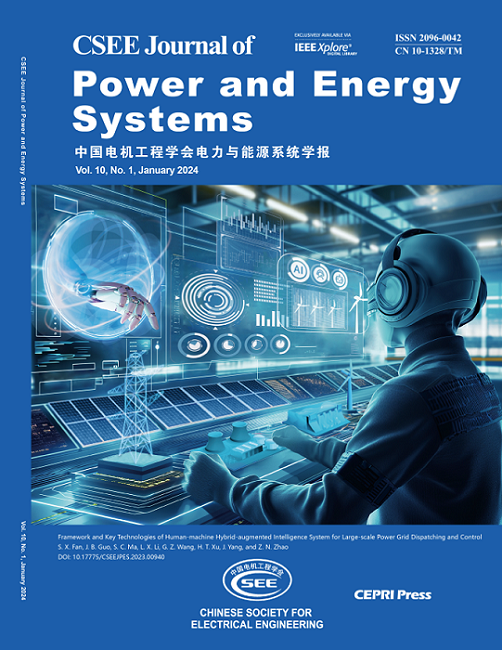Recycling of Silicone Rubber from Composite Insulator with Pyrolysis Method
IF 5.9
2区 工程技术
Q2 ENERGY & FUELS
引用次数: 0
Abstract
Composite insulators have been widely used in transmission lines. After being removed from transmission lines, their housing silicone material cannot degrade naturally. To tackle this problem, this paper proposes an effective method to recycle waste insulators by pyrolysis to obtain mullite用热解法回收复合绝缘体中的硅橡胶
复合绝缘子已广泛应用于输电线路。从输电线路上拆除后,其外壳硅胶材料无法自然降解。针对这一问题,本文提出了一种通过热解回收废绝缘子的有效方法,从而获得纯度高、结构紧凑的莫来石 $(\mathbf{3}\mathbf{Al}_{2}\mathbf{O}_{3}\cdot \mathbf{2}\mathbf{SiO}_{2})$。所研究的回收过程不会产生有毒产品。通过详细分析其降解产物(包括气体和残留物),研究了住房材料的热降解过程。实验结果表明,外壳材料中的着色剂 Fe2O3 可降低莫来石化温度,有利于莫来石的生成。此外,由于氢氧化铝(ATH)脱水生成的过渡氧化铝直径较小,能更好地溶解到二氧化硅相中,因此 ATH 是作为附加铝资源的更好选择。通过比较不同煅烧温度下形成的颗粒的成分、结构和粒度,建议两个阶段的热解温度分别为 1400°C 和 1600°C。
本文章由计算机程序翻译,如有差异,请以英文原文为准。
求助全文
约1分钟内获得全文
求助全文
来源期刊

CSEE Journal of Power and Energy Systems
Energy-Energy (all)
CiteScore
11.80
自引率
12.70%
发文量
389
审稿时长
26 weeks
期刊介绍:
The CSEE Journal of Power and Energy Systems (JPES) is an international bimonthly journal published by the Chinese Society for Electrical Engineering (CSEE) in collaboration with CEPRI (China Electric Power Research Institute) and IEEE (The Institute of Electrical and Electronics Engineers) Inc. Indexed by SCI, Scopus, INSPEC, CSAD (Chinese Science Abstracts Database), DOAJ, and ProQuest, it serves as a platform for reporting cutting-edge theories, methods, technologies, and applications shaping the development of power systems in energy transition. The journal offers authors an international platform to enhance the reach and impact of their contributions.
 求助内容:
求助内容: 应助结果提醒方式:
应助结果提醒方式:


